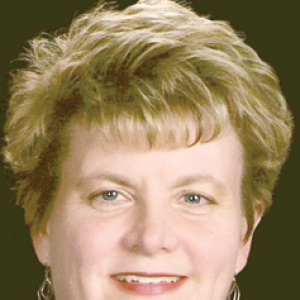Former Governor Steve Bullock signed an executive order during the midst of the pandemic last year to allow restaurants to deliver beer and wine with meals. Sen. Ellie Boldman, D-Missoula, and Rep. Ed Buttrey, R-Great Falls, have co-sponsored Senate Bill 320, which will approve the measure permanently. The Montana Tavern Association are in support of the bill, pointing out that people can already have drinks delivered on resort property
Owners Mike Davis and LaDelle Reynolds are closing the North Valley Ag Center in Columbia Falls on April 30. The facility has been sold to an event business.
Carolina Cotman. a yoga instructor, has opened the Samaa Retreat Center. formerly a bed and breakfast known as the Candlewycke Inn will still be open for traditional lodging this summer but going forward the Retreat Center will focus on wellness retreat experiences.
The proposal to build an outdoor recreation park near Flathead Lake has drawn opposition from neighbors. The proposed amendment to the county’s regulations would allow for commercial outdoor recreation activities, which would specifically prohibit swimming pools, water parks, bowling alleys, RV parks and commercial resorts.
Glacier National Park plow crews are working about a mile beyond the Loop on the road’s west side. In 2020 the plows didn’t make it to the Loop until April 14. Outdoor enthusiasts should expect ice on some portions of the roadway. There is also the threat of avalanches at and beyond Avalanche Creek.
Senior U.S. District Court Judge Charles C. Lovell, the Montana judge who approved a search warrant for the Unabomber’s cabin has retired. The Judge also presided over the Unabomber’s first few court appearances,
The Newberry, a new event center located at 420 Central Avenue in downtown Great Falls will open this fall. The center plans on hosting 90 plus events each year and bring large numbers of people to downtown Great Falls. More information can be found on the centers website, thenewberrymt.com.
Avelo Airlines has announced flights between Bozeman and Burbank beginning April 30. Avelo is a new commercial airline, which previously operated as a charter airline under a different name. Avelo will be the 10th airline that flies out of the Bozeman Yellowstone International Airport
Work is set to begin soon on the cleanup of the Harlowton railyard that’s contaminated with asbestos and petroleum. The cleanup of the Harlowton railyard is part of the attempt to revitalize a 180-acre site. About 3,000 cubic yards of asbestos-tainted soil will be dug up site by the end of this month, wrapped in plastic and hauled to a Great Falls landfill. Work will resume this fall by removing contaminated soil from another area that once had a 500,000 gallon fuel tank.
ROAM Beyond has opened its third location in Northwest Montana. ROAM Beyond’s Cabins sleep three to four people with features such as heated bedding, full bathrooms and induction stoves. Sites include fire pits, heated outdoor gathering spaces and the main attraction: tiny mobile camper units.
St. Peter’s Health officials, of Helena, have announced that the hospital will affiliate with Huntsman Cancer Institute at the University of Utah. The agreement will give patients undergoing cancer and hematology care access to more options for treatment and provide top cancer experts. Huntsman now has six affiliate cancer centers across the Mountain West region. All affiliates are independent, not-for-profit health systems.
Yellowstone Park officials have announced that they expect to open roads leading to Old Faithful and Canyon Village this week. The first road sections planned to open are from the west entrance to Old Faithful, from Mammoth Hot Springs to Old Faithful and from Norris to Canyon Village. Masks will be required in buildings and at any time when social distancing isn’t possible. Park-run visitor centers will stay closed. Yellowstone National Park Lodges is scheduled to open some of its accommodations later this month. Dining options will be limited to takeout only.
Certain USDA Service Centers in Montana are beginning to reopen to limited visitors by appointment only. Farm Service Agency (FSA) and Natural Resources Conservation Service (NRCS) staff also continue to work with agricultural producers via phone, email, and other digital tools.
Montana producers intend to plant 2.90 million acres (1.17 million hectares) of HRS in 2021, down 12% from last year, but in line with the 5-year average. Montana spring and winter wheat acres typically share an inverse relationship and this year is no different. Montana winter wheat acres are up 13% on the year at 1.75 million acres (708,000 hectares). Dryness has producers on edge, but favorable spring wheat prices will encourage them to plant into dry soil, despite the drought risk. (From Northern Ag Network)
U.S. Secretary of Commerce announced that the Department’s Economic Development Administration (EDA) is awarding a $1.7 million CARES Act Recovery Assistance grant to Bear Paw Development Corporation of Northern Montana, Havre, to capitalize and administer a Revolving Loan Fund that will provide critical gap financing to coronavirus-impacted small businesses in Blaine, Chouteau, Hill, Liberty, and Phillips counties. This EDA grant is expected to create 50 jobs, retain 70 jobs, and generate $3 million in private investment.
A unique ice cream shop has opened in Fairview. DJ’s Ice Cream Parlor & YakAttak Coffee, 308 S. Interstate Ave., sells all sorts of specialty coffees, ice cream, snow cones, cotton candy, according to Jessica Shaffer, who owns the business with her family, Michael, Bethany, Whitney, Dakota, and Tyrell.
The Gallatin County Health Board voted to extend the county’s face mask mandate into May. The mask mandate expires on May 27, and the reopening guidelines expire on May 10. A meeting in early May will be held to determine whether to continue with the government mandate.
Enplanements at the Bozeman Yellowstone International in March were about 80-85 percent of March in 2019. Airport Director Brian Sprenger said they are expecting a continual increase through summer. The airport’s summer flight schedule includes non-stop service to 29 summer markets, a record for the airport by nine airline brands. Delta Airlines is going to resume selling middle seats beginning in May after changing up COVID-19 safety precautions.
The Montana VA Health Care System opened a $12 million state-of-the-art primary care clinic at Fort Harrison VA Medical Center, where veterans will remain in a single appointment room and each provider will come to them in a one -stop shop approach.
AC Hotels, the modern, design-driven brand from Marriott, opened its first property to Montana, the AC Hotel Missoula Downtown. The newly-constructed property is managed by Aimbridge Hospitality.
The Daily Post Building in Uptown Butte has new ownership, after suffering damage from a fire a year ago. A renowned Butte family known as the Markovich’s closed the sale on St. Patrick’s Day. Corey and his wife, Kristi Markovich are ready to take on the historic building and its current problems. They plan about $1 million in renovations to the building that used to be home to the Irish Times Bar, the Post bar, and Muddy Creek Brewery.




